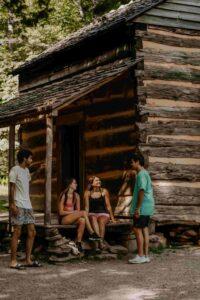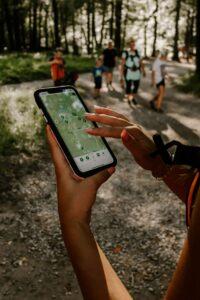Aug 25, 2020
Visit Cades Cove
Cades Cove is one of the most popular destinations in the Great Smoky Mountains National Park. Visitors can explore a variety of historical sites, enjoy the majestic mountain beauty, and find the thrill of spotting life in the wild. Whether you want to visit the grist mill or hope to run across a family of bears, a visit to Cades Cove will keep the whole family engaged.

New Cades Cove App
The Cades Cove Guide puts the history, nature, wildlife, and trails of the Cove in the palm of your hands. It provides a convenient, safe way to keep track of your locations in the Great Smoky Mountain National Park. Whether you are connected to Wi-Fi or exploring the scenic route, your personal park tour guide brings adventure up close.
Features
- View points of interest as a list or on a map, both online and offline.
- Click on the point of interest for photos, quick facts, unique descriptions, hidden treasures, and related content.
- Share your experience in the “stories” section for others to enjoy.
- Filter points of interest by The Loop, Trails, Visitor Info, and List View.
- View the full app navigation, including the loop, stories, nature, wildlife, history, and visitor information.
Cades Cove History
The first European settlers arrived in the Cove during the early 1820s, quickly clearing the abundant lands for farming. Community buildings were erected, such as log homes, barns, and smokehouses. But even before the Europeans arrived, Cherokee Indians traveled through the valley hunting for deer, bear, elk, and bison.
By 1850 the population had grown to 685, and it was not uncommon for households to have ten to twelve children. As the population grew, the community’s needs grew. Soon Baptist and Methodist churches were built, followed by schoolhouses for the kids. Neighbors often worked together, creating social events from tasks like corn husking and molasses making, allowing young couples to court, eventually leading to marriages. Deaths also brought the community together. Men would make coffins and dig graves, while the women would prepare the body for burial. Then everyone chipped in to help the grieving families by cooking meals and helping bring in crops.
In 1927 the state began purchasing the land for the creation of the national park. Some families welcomed the state’s effort and willingly sold their property and moved out, but many families resisted the attempts. Several residents signed life-leases that allowed them to stay on the land for the rest of their lives, as long as they abided restrictions on hunting, trapping, and timber cutting. The last school in Cades Cove closed in 1944, and the post office soon followed in 1947. Today the National Park Service designated the Cove as a “historical area” and restored and maintains the buildings as they looked in the early days of the settlers.


Explore the Cove
Each Wednesday, through September 30th, the park offers vehicle-free access along the Cades Cove Loop. The loop is an 11-mile, one-way road circling the Cove, which gives motorists access to sites and the opportunity to sightsee at their own pace. Allow for two to four hours to tour Cades Cove, longer if you stop to explore any of the area trails. Traffic is heavy during the summer, fall, and weekends throughout the year.
Many trails begin in the Cove, including accessible hikes like Abram Falls or more time-consuming hikes like Thunderhead Mountain. Also, make sure to check out the many historical landmarks located within Cades Cove. Sites like the John Oliver Cabin, the Becky Cable House, and the Elija Oliver Place give you a peek into the settler’s home lives in the 19th century. You can also check out the Primitive Baptist Church, the Missionary Baptist Church, and the Methodist Church to learn more about where to community came together to worship. And don’t forget to check out local wildlife like black bears, elk, white-tailed deer, turkey, or woodchucks. But make sure to follow these safety tips and do not feed or approach any animals.
There is so much to do, so download and use the Cades Cove App to plan your next visit.

For more information on the Great Smoky Mountain National Park, check out these posts:

